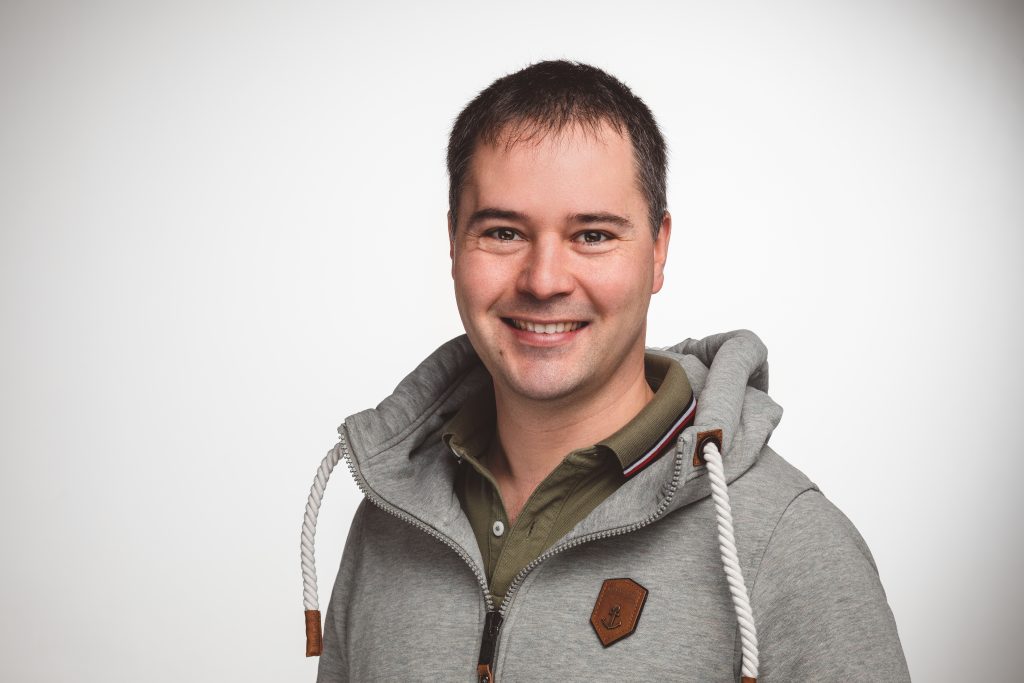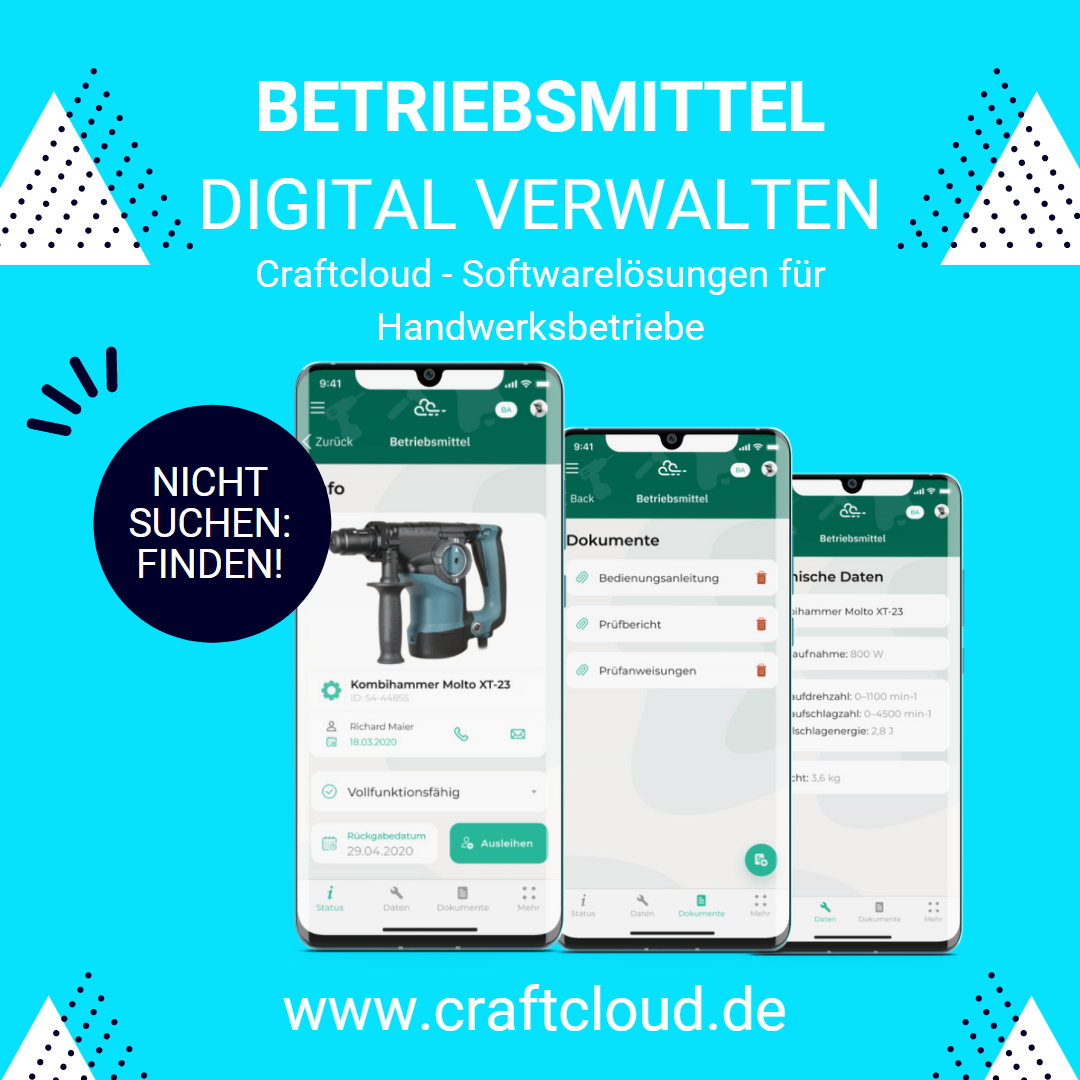
The career of Johannes Baier, founder of Craftcloud
We often identify not only with a company, a brand, or a product itself but also with the people behind it. And that’s a good thing, after all, it’s the people behind it who determine whether a company is successful or not, whether a brand gains recognition, and whether a product offers its customers added value or turns out to be a load of hot air.
I am often asked how I came to found Craftcloud and enter the hotly contested market of “software for craftsmen”. A market that is very challenging for many reasons. My background probably explains this best and since there is no biography about me yet here is a self-experiment.
Childhood in an artisan family business
I was born into a typical medium-sized family business in the skilled trades. Founded by my father, it is now run by my brother. As is usual in this environment, my siblings and I as youngsters came into direct contact with craft activities but also with questions of business and employee management. You are taken along to interesting construction sites and business meetings, you are allowed to help out where you can, you follow conversations and where you spend your vacation jobs is set. Even in private life, company and work are a constant topic.
One gets to know the worries and hardships of craft entrepreneurs. Do we have enough work for people? Or equally important, do we have enough people to do the work? Do we make money or was all the effort for nothing in the end? Who wants to trick you over and with whom can we forge successful partnerships? Are we dependent on individual customers and which suppliers are good? Why doesn’t a customer pay? Does he not want to or does he have a legitimate reason to do so?
But you also learn a lot about the opportunities as an entrepreneur and the honorable trade. You are responsible for your happiness. This is certainly one of the greatest lessons I have learned so far from my life and my upbringing. These lessons were always understood as a chance and never as a burden. To earn money my “own hands” and to dispose of it – better: to invest it – that I learned from an early age.
Work represents a value in itself. Self-creation can bring satisfaction and pride. That is what I internalized and what working in the craft stands for. Fair dealings with one another and standing up for one’s cause – daring to do something, taking action. Having courage and daring to do something. Sometimes the motto “try before you buy” applies. These are all aspects that I believe I have picked up through this socialization.
Involved from an early age: computers, software, and the Internet
As a child and teenager in the 90s, computers, and software were already relatively widespread. We also had our first computers and used software for all kinds of tasks. Also because my father and my brother were very open-minded towards technical innovations by nature and recognized the advantages. However, at that time we were still far away from digitalization as we know it today and what we understand it today. I am always amazed when I read today how the historical development of computers for everyone and the development of the Internet has progressed. Within about 30 years the world has turned upside down in this respect. Exactly those 30 years I grew up with my generation.
I think every generation has some technical thing that they’re passionate about. Something they are very intensively engaged with. It’s just the technologies that develop while this generation is young. What exactly that is for each individual, of course, depends on personal interest. The generation before no longer has the great and deep interest to deal with the innovations so intensively. They have already found their “tools for happiness” and are settled in their world. Open-minded people may use the technology, but they will no longer gain a deep understanding of it. There are new playgrounds for subsequent generations. They, too, merely apply the technology or consume it passively.
One example, the generation before me was much more interested in cars and motorcycles. Almost everyone screwed their moped and later their car. People were interested in engines and how they worked, and they repaired and tinkered with them themselves. In my generation, this was no longer so pronounced. The car is taken to the workshop. You don’t know in detail how an injection pump works. In contrast, we grew up with the computer and the Internet and absorbed them.
You have time. Do it!
At that time I came as the youngest and the one who “has time to deal with it” for the first time in contact with the technology around computers, software, and the Internet. Already in my school time, I started to design and program websites. First out of self-interest for the website of the parental family business and in private, for associations. Finally as a small sideline for companies and as a freelancer for other agencies.
Due to time constraints and further professional development, I put this topic on the back burner. Admittedly, the world of the Internet has changed completely since then. The programming languages and possibilities have developed enormously. But the basics I learned at that time still help me today.
The Internet has evolved – the basics remain
Today it is possible to run highly complex software applications distributed over the Internet. Interfaces are not much inferior to applications running on your PC. The Internet has become so powerful and fast that it is only a strategic question, not a technical one, where software is run. But, the basics I learned back then are still correct and helpful today. Because often superficial knowledge is collected and information is absorbed, correct and good decisions require a deeper understanding. An understanding of the basics.
Through school education at the information technology high school, which coincided with my interests and the later study of electrical engineering, I deepened my knowledge. Again, a lot of basics for my current entrepreneurial activity.
Not losing sight of the craft
Always there at the same time, the craft. Training as a technical draftsman and working in a craft business “at home” did not leave me lacking in practice. Parallel to my studies, I was able to take over responsibility for my first product area. With outdoor sliding shutters and architectural sun protection for facades, I took over a very interesting business field. It was innovative and had to be built up first. Product development, sales, and the details of craftsmanship. All in all, it was very instructive.
I was still responsible for everything that had to do with computers and EDP. I looked after the website, purchased IT infrastructure, and was involved in software decisions and implementations. During this time, we built up a professional marketing department and worked with agencies. I was therefore more of a decision-maker and user and did fewer things myself. Since almost all of our products are electrically automated and drive technology was a hobbyhorse of my father’s, which I took over, I never lost touch with electrical engineering. The development of so-called “embedded systems”, i.e. electronics consisting of hardware and software, was my constant companion. Again, essentially in the role of decision-maker and supervisor, not the doer.
Why do I emphasize this? In the end, you have to focus on a few things, and during this time it was essentially building up and being responsible for the entire product area and the associated craftsmanship.
And again back to the development of software
Later I participated in a software company, which is specialized in software and consulting for handicraft businesses. There I worked for some time in the sales department and later in development management. I gained experience in what is important. Especially where the advantages and disadvantages of the different technologies and approaches lie.
Above all, I learned that programming software is fundamentally different from building windows. But there are also some similarities. An essential aspect of software development is to translate into different languages. The language of the customer, who speaks in his domain, into the language of the programmers and back again to the user.
It is an advantage to know both worlds – to understand and speak both languages, so to speak. That is exactly what I like and enjoy. And that is also the reason why I founded Craftcloud. I want to share my experiences with you and be successful together.
There is still a lot to do – let’s get it done!
Related Articles
Recent posts
Categories
- Asset Management 25
- Craft 41
- Customer Relations (CRM 1
- Digitization 51
- Recruitment 1
- Uncategorized 25




